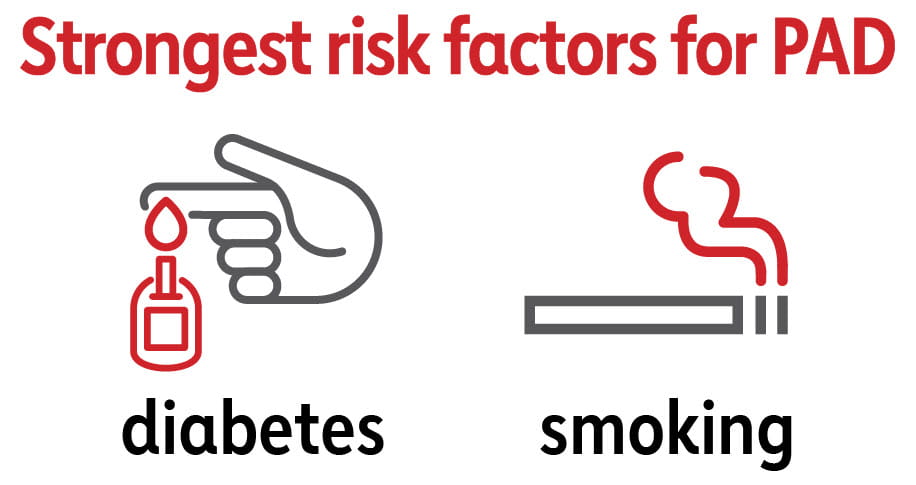What is Peripheral Artery Disease?

Peripheral artery disease is similar to coronary artery disease.
Peripheral artery disease, or PAD, is a narrowing of the peripheral arteries that carry blood away from the heart to other parts of the body. The most common type is lower-extremity PAD, in which blood flow is reduced to the legs and feet. Upper-extremity PAD (arms, hands and fingers) is less common but affects about 10% of the population.
Both PAD and coronary artery disease are caused by atherosclerosis, the buildup of fatty plaque in the arteries that narrows and blocks them throughout the body, including in the heart, brain, arms, legs, pelvis, kidneys and other organs.
Quick facts about PAD
The most common symptoms of lower-extremity PAD are cramping, fatigue, aching, pain or discomfort in the leg or hip muscles while walking or climbing stairs. This pain usually goes away with rest and returns when you walk again.
Be aware that:
- Many people mistake the symptoms of PAD for something else.
- PAD often goes undiagnosed by health care professionals.
- People with PAD have a higher risk of coronary artery disease, heart attack and stroke.
- Left untreated, PAD can lead to gangrene and amputation.
View our interactive PAD library.
Added risks for PAD
Certain factors increase your chances for peripheral artery disease, including:
- Older age.
- High blood pressure or high cholesterol
- Smoking
- Type 2 diabetes
- Not getting enough physical activity
- Stress
- Diets high in saturated fats
- Obesity
- Chronic kidney disease
The good news
If you’re at risk or have been diagnosed with PAD:
- PAD is diagnosed in a simple, painless way.
- You can take control: Follow your health care professional's recommendations and strive to lead a heart-healthy lifestyle.
- Some cases of PAD can be managed with lifestyle changes and medication.
Atherosclerosis and PAD
If you have atherosclerosis, that means that plaque has built up inside your artery walls. Plaque is made up of deposits of fats, cholesterol and other substances. Atherosclerosis in the peripheral arteries is the most common cause of PAD.
To see how plaque limits blood flow, view our interactive PAD library.
First, plaque builds up enough to narrow an artery, which reduces blood flow. Next, if that plaque becomes brittle or inflamed, it may rupture. This causes a blood clot to form. A clot can further narrow the artery or completely block it.
If the blockage remains in the peripheral arteries of the legs, it can cause pain, changes in skin color, difficulty walking and sores or ulcers. Total loss of blood flow to the legs and feet can cause gangrene and the loss of a limb.
If the blockage occurs in a carotid artery, it can cause a stroke.
Watch an atherosclerosis and PAD animation
It’s important to learn the facts about PAD. The more you understand, the more you can help your health care team make an early diagnosis. PAD has common symptoms, but many people with PAD never have any symptoms.
Talk to your health care team and take control of your cardiovascular health.
Support That Lifts You Up
Our online community of patients, survivors and caregivers is here to keep you going no matter the obstacles. We’ve been there, and we won’t let you go it alone.

